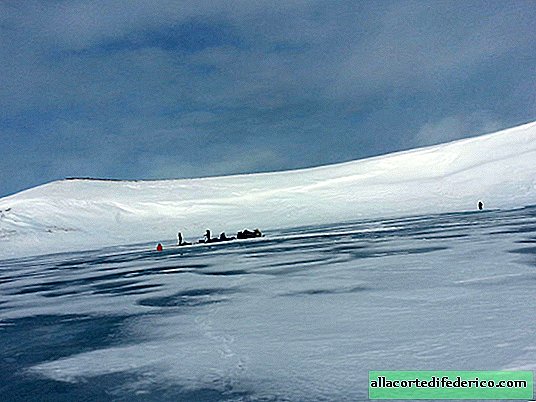Because of what the last mammoths died out
People in the process of evolution have destroyed many species of animals (and, unfortunately, continue to do so). Woolly mammoths - the "long-haired" relatives of modern elephants - are also commonly recorded as victims of human development. When we hear the phrase "mammoths are extinct," then immediately before our eyes there is a picture of an unfortunate animal, which is pursued by people in hides and with spears, driven into a pit, studded with sharp stakes. Of course, it could not have done without a man, but the latest representatives of woolly mammoths died for a completely different reason.
People have nothing to do with it.
It is widely believed that the majority of mammoth populations in the world have disappeared due to a deadly cocktail of climate change and human hunting, with the latter having died out on the mainland about 11,000 years ago. But studies show that several groups of mammoths held out longer. For example, one population survived on Wrangel Island in the Arctic until about 4,300 years ago. And mammoths on the island of St. Paul in the Bering Sea between Russia and the United States became extinct about 5650 years ago - this is today considered the most accurate dating of the prehistoric extinction of animals.

In the photo: St. Paul's Island
As the world gradually warmed up after the ice age, and sea levels rose, St. Paul's Island became smaller, as did freshwater lakes on it. Here a peculiar domino effect worked: as the lakes became smaller, large groups of animals, including mammoths, constantly gathered around them. They trampled the vegetation around, which caused more dirt, which in turn made the remaining water even less suitable for drinking. In this situation, modern elephants dig holes near a contaminated lake in order to quickly drink relatively clean running water. But in a small island, this method no longer helped.
No water anywhere
So the last mammoths on Earth died of thirst. This is evidenced by the analysis of the lake bottom on the island of St. Paul. Scientists also tracked the reduction in fungal spores that usually grow in the dung of large animals. The island itself was isolated from the mainland about 14,000 years ago, and there is no evidence that in ancient times people ever lived there and influenced the population of local animals. The first boat docked here only in 1787.

Another feature of local mammoths is their size. These are far from the giants that we are accustomed to from the found icy remains in Yakutia and Kamchatka. The inhabitants of the Wrangel and St. Paul Islands were descendants of the dwarf mammoths Mammuthus primigenius. Their growth was only slightly higher than that of an adult. This is due to many generations of crossbreeding in a small population and environmental changes.

















